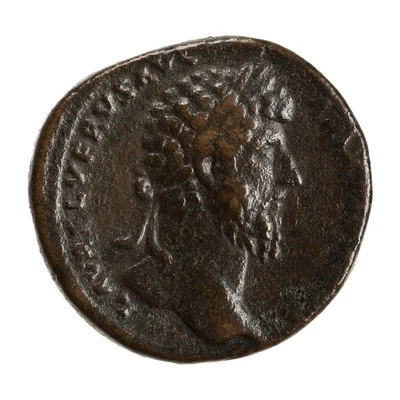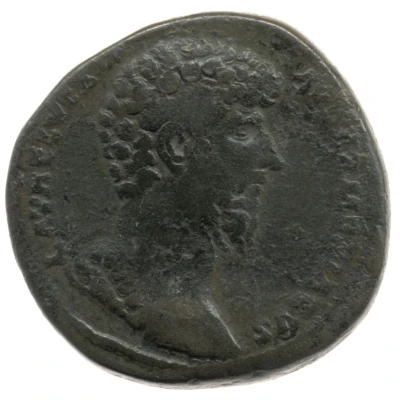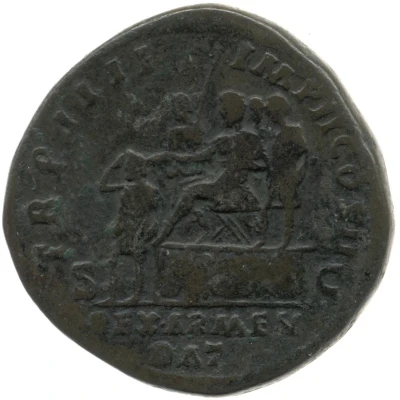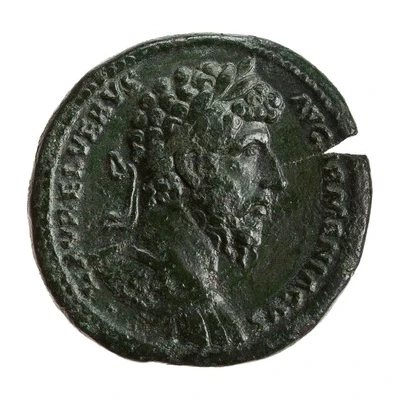
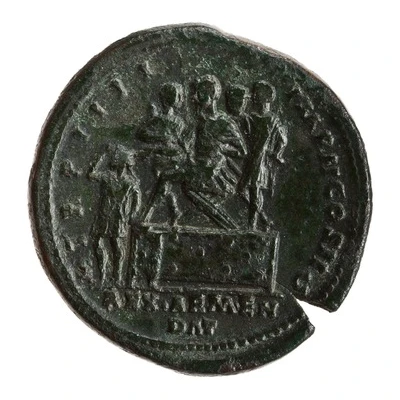

© American Numismatic Society (ANS)
Sestertius - Lucius Verus and Sohaemus of Armenia TR P IIII IMP II COS II S C REX ARMEN DAT
| Bronze | 27 g | 35 mm |
| Issuer | Rome › Roman Empire (27 BC - 395 AD) |
|---|---|
| Emperor | Marcus Aurelius (Marcus Aurelius Antoninus) (161-180) |
| Type | Standard circulation coin |
| Years | 163-164 |
| Value | 1 Sestertius = ¼ Denarius |
| Currency | Denarius, Reform of Augustus (27 BC – AD 215) |
| Composition | Bronze |
| Weight | 27 g |
| Diameter | 35 mm |
| Shape | Round (irregular) |
| Technique | Hammered |
| Demonetized | Yes |
| Updated | 2024-10-06 |
| Numista | N#264084 |
|---|---|
| Rarity index | 100% |
Reverse
Lucius Verus, in military dress, seated left on curule chair, set on low platform; behind him on platform, two soldiers; before him on platform, officer standing right, holding rod; on ground before platform, King Sohaemus, raising right hand to his head.
Script: Latin
Lettering: TR P IIII IMP II COS II S C REX ARMEN DAT
Translation:
Tribunicia Potestate Quarta, Imperator Secundum, Consul Secundum. Senatus Consultum. Rex Armeniis Datus.
Holder of tribunician power for the fourth time, supreme commander (Imperator) for the second time, consul for the second time. Decree of the senate. King given to the Armenians.
Comment
Mass varies: 24.46–29.48 g;Example of this type:
American Numismatic Society (ANS)
Source:
Online Coins of the Roman Empire (OCRE)
Interesting fact
One interesting fact about this coin is that it features an image of Sohaemus of Armenia, who was a Roman client king of Armenia, on the reverse side, while Lucius Verus is depicted on the obverse side. This coin was minted during a time when the Roman Empire was expanding its territories and influence, and the inclusion of Sohaemus on the coin highlights the importance of Armenia as a Roman client state. Additionally, the coin's design and inscriptions reflect the cultural and political ties between Rome and Armenia during this period.
